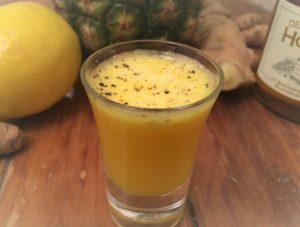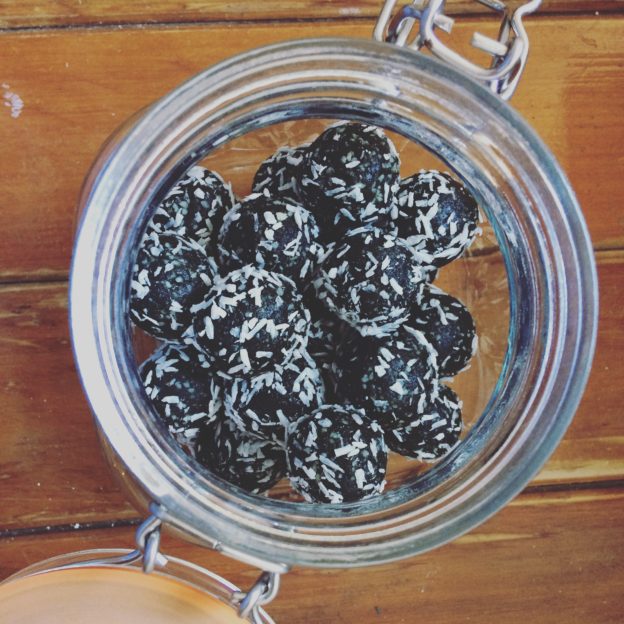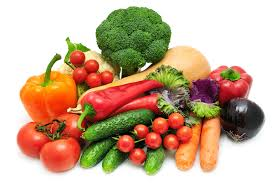If you or any of your loved ones suffer from asthma, I hope you find the information below helpful. Let me know if you’d like the links to the studies mentioned or if you have any questions in the comments below. Evonne xx
THE LINK BETWEEN DIET AND ASTHMA
In the UK, around 5.4 million people are receiving treatment for asthma.
What is Asthma?
Asthma is a common chronic inflammatory disease of the airways. It is characterised by variable and recurring symptoms, reversible airflow obstruction and bronchospasms (contractions of the airways). Symptoms include wheezing, coughing, a tight chest and shortness of breath.
What Causes Asthma?
The causes are not completely understood, but appear to be a combination of complex environmental and genetic interactions. The study of epigenetics is shedding more light on how lifestyle and environmental factors influence the expression of our genes. Environmental triggers include: smoking; air quality; chemical exposure (such as volatile organic compounds (VOCs), formaldehyde and phthalates); indoor allergens such as dust mites, animal dander and mould; viral infections and paracetamol use (including use by the mother whilst pregnant). The hygiene hypothesis has been proposed as a significant contributor to the rise in allergies in recent years. This means that our increasing use of household cleaning products, our increased sanitation and less time spent outdoors getting dirty have reduced our exposure to bacteria and viruses, stripping our immune systems of the opportunity to build up ‘tolerance’ in childhood. In addition, use of antibiotics in early life and birth by Caesarean section lead to a reduction in the numbers and diversity of the beneficial gut bacteria that have significant positive effects on the immune system.
The Role of Diet in Asthma
Many dietary factors have been investigated in their link to asthma and other inflammatory diseases. A dietary basis for inflammatory diseases can be explained by the interaction between food and nutrients with molecular pathways that promote gut health, mediate immune tolerance, modulate inflammation and gene expression (Thorburn et al, 2014).
Harmful
Sugary drinks (including soft drinks and fruit juices)
Consumption of sugary drinks has been found to be associated with increased incidence of asthma in 2-9 year olds. In one study, children who consumed over 5 sugary drinks per week had 5 times the incidence of asthma compared with children who consumed less than one per month (De Christoper et al, 2016). It is hypothesised that the free fructose in these drinks leads to the formation of advanced glycation end products (AGEs) which are highly inflammatory.
Fast Foods
A study in the journal Thorax (Elwood et al, 2013) found that fast food consumption was correlated with an increased risk of severe asthma. Fast food is often high in omega 6 fatty acids and trans fats which promote inflammation. Fast foods also often contain too much sugar and salt.
Salt
Dietary salt (sodium chloride) is associated with an increased risk of exercise-induced asthma (Mickleborough et al, 2011). Sodium and/or chloride may have a direct effect on airway smooth muscle, trigger the release of bronchoconstrictor mediators from airway cells, and influence vascular volume and pressure leading to a narrowing of the airways. High levels of sodium are found in processed foods such as breakfast cereals, tinned soups, baked beans, ready meals, crisps and baked goods.
Beneficial
Fibre
A diet high in fibre increases the number and diversity of beneficial gut bacteria, increasing short chain fatty acid (SCFA) production. SCFAs are anti-inflammatory and increase the regulatory T cells (Tregs) which regulate inflammation. Asthmatics have been found to have fewer Tregs (Thorburn et al, 2015).
Antioxidants
Vitamins A, C and E have all been found to have beneficial for asthmatics. Antioxidants help to counteract the oxidative stress associated with inflammation which leads to tissue damage, airway inflammation and abnormal immune responses, all of which increase asthma severity. A high intake of dietary vitamin A has been associated with a decrease in asthma incidence and severity. Vitamin C reduces inflammatory markers in the blood such as C reactive protein (CRP). Reduced plasma concentrations of vitamin C have been found in children with asthma. Vitamin E counteracts oxidative stress, reduces airway inflammation and decreases Th2 immune response. A low dietary intake of vitamin E has been correlated with increased asthma severity (Han et al, 2013).
Vitamin D
Vitamin D has important roles to play in the regulation of gene expression, immune response, lung development and preventing viral illnesses which may trigger an asthma attack. Reduced concentrations of vitamin D have been found to be associated with decreased lung function and poor control of asthma (Han et al, 2013).
Methyl Donors
Nutrients that act as methyl donors help to regulate gene expression and therefore immune response (Han et al, 2013). Methyl donors include folate, vitamin B12 and choline. Having a mutation of the MTHFR gene may reduce the efficiency of your methylation pathways.
Magnesium
Magnesium sulfate is used intravenously in hospital to treat severe acute asthma attacks. Several studies have found low serum magnesium levels in asthmatics. A 2014 study (Hatipoglu et al) found that serum magnesium is significantly lower in children presenting with asthma attacks. A second study (Shishimorov et al, 2015) gave children with uncontrolled asthma 144mg of magnesium per day for 3 months and compared them to a control group of asthmatic children given a placebo. Those children who had been given the magnesium halved their frequency of asthma attacks, had fewer symptoms and needed less medication than the control group. Magnesium is an antagonist of calcium and therefore promotes smooth muscle relaxation. It also suppresses excitability of muscle fibres, inhibits the production of inflammatory mediators, and stimulates nitric oxide production (a potent vasodilator).
Fish Oil
The omega 3 fatty acids in fish oil (DHA and EPA) have been found to have a strong anti-inflammatory effect by competing for enzymes with pro-inflammatory substrates (Mickleborough et al, 2011).
Recommendations for Relieving the Symptoms of Asthma
If you smoke, quit. Now!
Aim for at least 7 portions of fruit and vegetables a day (of which at least 5 should be veg). Focus on eating a rainbow by including green vegetables (such as spinach, rocket, watercress, brocolli and sprouts) and red, orange and yellow fruit and vegetables such as carrots, squash, sweet potatoes, tomatoes, bell peppers, cantaloupe melon and mango). This will ensure that you are eating plenty of fibre to feed those good bacteria and top up your levels of antioxidants and folate.
Eat the best quality meat and animal products that you can afford, even if this means that you eat meat less often. Grass-fed, organic and free-range meat contains higher levels of anti-inflammatory omega 3 fatty acids and lower levels of pro-inflammatory arachadonic acid. Good quality animal products such as meat, poultry, liver, eggs and butter are rich sources of vitamin A, vitamin B12 and choline.
Cook with olive oil or coconut oil instead of vegetable or sunflower oil. Vegetable oils are high in pro-inflammatory omega 6 fatty acids and can form trans fats when cooked at high temperatures. Use light olive oil or coconut oil for cooking, and save your extra virgin oilve oil for drizzling over your salads or vegetables. This will also increase absorption of the fat-soluble vitamins A and E.
Eat oily fish 2-3 times per week or take a good quality fish oil supplement if you don’t like fish to optimise your levels of anti-inflammatory DHA and EPA.
Eat fermented foods such as yoghurt, kefir, sauerkraut and kombucha. These can be made quite easily at home and contain high levels of beneficial gut bacteria.
Eat food sources of magnesium daily. These include dark chocolate, green leafy vegetables, nuts and seeds. Top up your magnesium levels by taking a bath with Epsom salts 2-3 times a week and/or using a magnesium oil spray.
Use spices and herbs liberally. A 2012 study (Percival et al) found that ginger, turmeric, cloves, rosemary, paprika, sage and cumin decreased oxidation and inflammatory markers even when eaten in small amounts.
Cut out added sugar. This includes all soft drinks, fruit juices and sugar added at the table to hot drinks and cereals etc. As well as the more obvious sources of sugar such as cakes, biscuits, sweets and cholocate, watch out for ‘hidden’ sugar in ready-made pasta and curry sauces, ketchup, tinned soups, baked beans, ready meals and stock cubes. These go by the names of sucrose, glucose, fructose, glucose syrup, glucose-fructose syrup, honey, dextrose and raw cane sugar amongst others. The easiest way to avoid these is to cook from scratch whenever possible.
Limit take-aways/fast food to once per month or less as these are almost always high in salt, sugar and omega 6 fats.
Minimise use of cleaning products, air fresheners and scented candles around the home. In particular, avoid products containing limonene as this converts into formaldehyde once in the atmosphere. Use natural products instead such as vinegar, lemon juice, bicarbonate of soda and essential oils, and don’t feel compelled to clean up every bit of dirt! Do, however, get rid of any mould in your home.
Get plenty of fresh air – preferably by the sea or in the woods whenever possible. This will top up your vitamin D levels and reduce exposure to air pollution. Consider wearing a face mask if you exercise near busy roads.




